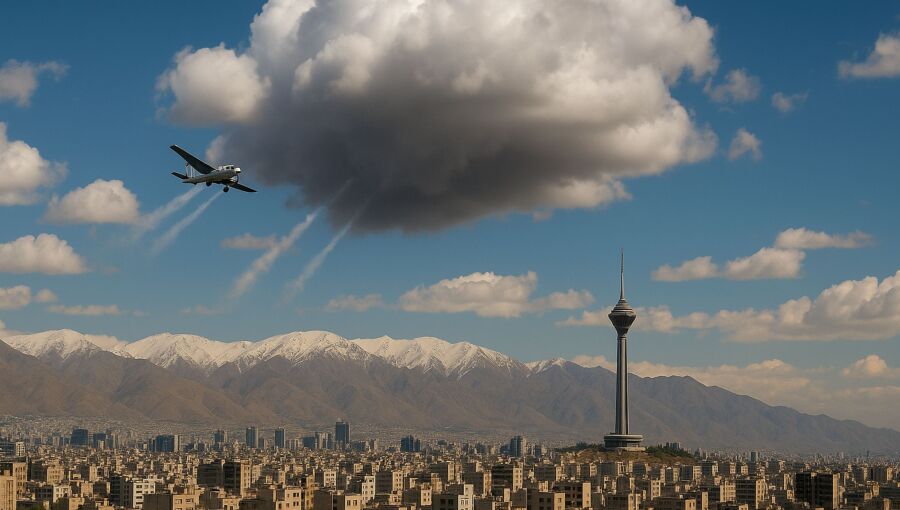Iran to begin cloud seeding operations from mid-November

Iran's cloud seeding operations will begin from mid-November, with aircraft and drones ready for deployment, ISNA reported on October 5.
Cloud seeding is a weather modification technique that enhances a cloud's ability to produce rain or snow by introducing substances like silver iodide or dry ice into clouds containing supercooled water droplets, providing nuclei around which ice crystals can form and grow until they fall as precipitation. Initially developed in the Soviet Union, Iranian authorities have increasingly used the method to seed clouds over cities around the country, including Tehran.
Mohammad Mahdi Javadian-zadeh, head of the Organisation for Development and Exploitation of New Technologies of Atmospheric Water, said preparations are underway to equip aircraft and drones for operations. Target areas are being defined to enable necessary assessments, with operations starting mid-November.
In the first phase, three main regions have been identified as target areas: the Lake Urmia and Zayandeh Rud catchment basins, which will benefit several provinces, as well as Khorasan Razavi province. Tehran province is also included in the list of operational areas, but dates have not yet been confirmed.
Javadian-zadeh outlined plans to expand the aerial fleet, saying several specialised aircraft are currently being equipped.
"We predict their number will increase from two units to five units so that we can cover more areas of the country," he said.
He acknowledged that limited financial resources present a challenge, noting that rising prices, particularly in the foreign exchange sector, have affected flight costs.
"We are following up on securing financial resources through the country's budget programme. We hope that with the cooperation of the Planning Organisation and subsequent approvals, we can expand the fleet," he said.
Twelve specialised bases are being designed across various provinces to play an essential role in increasing the accuracy and effectiveness of operations. These bases will be established according to the climatic conditions and potential of each region.
On the project's impact, Javadian-zadeh explained that international authorities have declared that rainfall increases from cloud seeding range between 5% and 15%.
"In our country, based on assessments by the Water Institute of Tehran University, the average rainfall increase has been between 15% and 20%, although this varies depending on the type of cloud system and climatic conditions of each region," he said.
Hastening government decisions, Iran entered its new water year with 21 out of 31 provinces recording no rainfall since the hydrological calendar began on September 22.
Total rainfall across the country from September 22 to October 3 amounted to just 1.5mm, marking a 48% decline compared to the same period last year and a 21% shortfall relative to the 58-year long-term average of 2mm, according to figures from the Water Resources Management Company.
Overpopulation, climate change, poor agricultural practices and outdated farming machinery are cited as core reasons behind the worsening drought patterns.
The smog situation in Tehran has also worsened this autumn because the rains, which usually start in September, have been so scarce. Since last October, it has only snowed once in Tehran, in the city's northern parts.
The pollution issue in the capital city of 15mn people becomes much worse during daylight hours due to the metropolis being surrounded by the Alborz mountain range. It acts as a wall which traps the cold winter air heavy with pollutants.


Follow us online